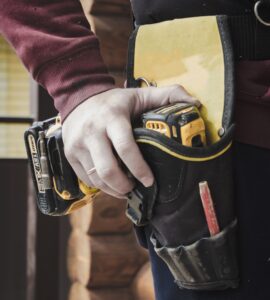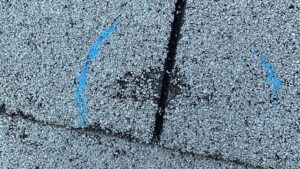Flat roofs have gained traction in recent times, offering a blend of affordability, straightforward installation, and remarkable versatility. They can be utilized for various purposes, ranging from additional living space to installation of green energy solutions such as solar panels. However, they are not without their challenges, with water accumulation being a common concern. This issue can be more than a nuisance, leading to severe consequences like structural damages and deterioration of the roof’s aesthetic appeal, making it crucial to understand how to address it. This post aims to shed light on this topic.
Examining Roof Design
If you observe water pooling on your flat roof, the first step is to scrutinize the design. The quality of workmanship during the initial construction stage plays a significant role. A poorly designed flat roof is more liable to water accumulation, which is a frequent cause of this problem.
Start by having a contractor examine the overall roof design. If the problem stems from poor design, you’ll need to identify the areas contributing to the water pooling. This highlights the importance of hiring an experienced contractor during the building process – high-quality architectural work can forestall issues such as water pooling.
Moreover, a well-executed roof design can further enhance your property’s aesthetic appeal and potentially increase its value. So, investing in skilled craftsmanship while building a flat roof is not just an expense, but an investment towards maintaining the structural integrity and value of your property.
If your current roof design is suboptimal, the best course of action would be to identify the necessary modifications to prevent further water accumulation. For instance, you might observe that certain parts of the roof are sagging, creating an uneven surface and contributing to the pooling problem. A roof assessment should be a regular part of your property maintenance routine to ensure early identification and rectification of such issues.

Considering Rubber Roof Layers
Many contemporary flat roof designs employ a layered approach. This method, which involves multiple material layers, fortifies the roof’s overall stability and structure. However, it may also present challenges, particularly if the roof comprises rubber layers.
Rubber roof layers provide certain advantages, such as aiding insulation. They can add significantly to your property’s energy efficiency by reducing thermal transmission. However, it’s crucial to remember that this material can accentuate existing roof ridges, leading to water accumulation.
If this is the case, reassessing your roofing solution’s layer structure is a good starting point. It may require some effort, especially if additional layers need to be added or existing ones modified. However, this strategy offers a long-term solution to prevent water accumulation on your flat roof. Furthermore, well-planned rubber layering can exponentially extend the lifespan of your flat roof and reduce the need for frequent repairs.
Inspecting for Damaged Roof Materials
Over time, constant exposure to UV light, rain, and other weather elements can deteriorate your flat roof’s construction materials. This deterioration is another potential cause of water pooling on your roof.
Frequent inspections of your flat roof are crucial. Damage might not be immediately evident – but expert inspections can often identify damaged materials early on. Addressing and repairing this damage efficiently can prevent more serious issues from developing over time. For instance, a very small surface-level crack or blister, if ignored, can grow and lead to internal water seepage causing significant losses.
As roof materials wear over the years, they can create an uneven surface. To prevent water pooling on a flat roof, an even surface is crucial. Therefore, any unevenness generates areas where water can continue to pool. Regular maintenance can ensure the roof stays even and durable for longer periods, thereby saving time and cost on comprehensive repairs.
Why Addressing Water Accumulation is Crucial?
While roof pooling might seem insignificant initially, it’s important to understand that these water pools augment the load on your building’s construction materials. This is due to the added weight of the water on the roof. If structural damage occurs while water is pooling, it can instigate leaks, causing further damage to your property.
It’s also worth deliberating that stagnant water can be harmful. It encourages the growth of algae and moss, which can severely damage your flat roof’s construction materials. This further reiterates the significance of addressing water accumulation promptly and strategically.

Another significant reason to overcome water pooling is the risk of freezing during winter. Extremely low temperatures can make the pooled water freeze, which can also inflict damage on the roofing materials and possibly cause leaks, adding to the problems related to water accumulation.
Final Thoughts When it comes to water accumulation on flat roofs, engaging the appropriate professional roofing contractors for the initial roof installation can make a significant difference over the course of time. By leveraging the expertise of roofing professionals, you can ensure a sturdy, durable, and efficient roof design. With more than 20 years of experience, Canopy Roof & Solar possesses the expertise to install flat roofs that are less prone to pooling and other problems. We also offer affordable roof repair and improvements to help you tackle existing pooling issues. Contact us to find out how we can help you ensure the longevity and efficiency of your precious asset.





